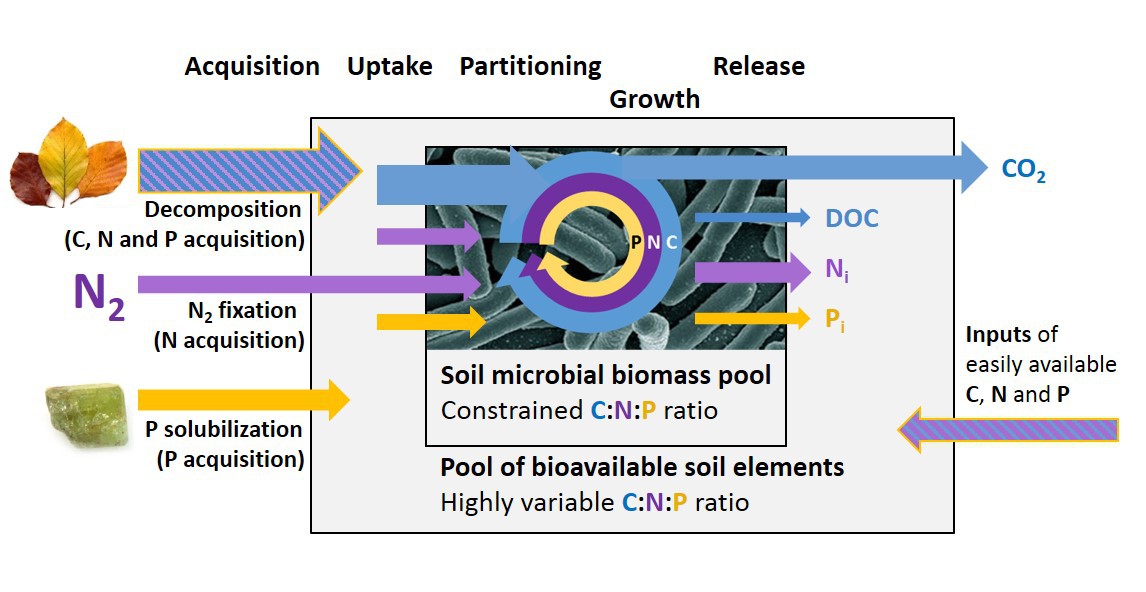Stoichiometric homeostasis of soil microorganisms as a driver of element cycling in grasslands
DFG SP1389/6-1 in the Emmy Noether program
From 06/2016 to 06/2020Principal Investigator: Marie Spohn
Staff: Meike Widdig, Per-Marten Schleuss, Eduardo Vazquez
Soil microorganisms are homeostatic with respect to their biomass stoichiometry, i.e., they maintain their biomass stoichiometry relatively constant within a narrow range independently of the element ratios in their environment. So far, it is not known how soil microbial communities maintain their biomass stoichiometry, and how this affects ecosystem-level element cycling. Understanding this process is crucial for predicting impacts of atmospheric nitrogen (N) deposition and of other environmental changes on element cycling. Therefore, the aim of the proposed project is to develop a conceptual framework of stoichiometric homeostasis of soil microorganisms as a driver of element cycling in grassland soils. For this purpose, I will study two types of processes that soil microbial communities use to maintain their biomass stoichiometry; on the one hand processes that adapt element cycling in the microbial biomass to ratios of element availabilities, and on the other hand processes that contribute to element acquisition. Among these processes are (i) uptake of carbon (C), N and phosphorus (P) in the microbial biomass, (ii) the microbial C use efficiency, (iii) the turnover of single elements in the microbial biomass, (iv) mineralization of organic C, N and P, (v) solubilization of bound inorganic P, and (vi) fixation of N2. To investigate these processes, I will use innovative methods such as the determination of microbial C use efficiency based on 18O-labeling of DNA, the assessment of the mean residence time of single elements in the microbial biomass by isotopic labeling of DNA, and the analysis of the distribution of belowground exoenzyme activities by soil zymography. The proposed project will be based on grasslands that are located on three continents and that are subject to the same full factorial nutrient manipulation experiment (Nutrient Network). By working on a globally coordinated experiment, I expect the results of this research to have a large scope of inference. The main value of the project will be that it provides a conceptual framework of stoichiometric homeostasis of soil microorganisms as a driver of element cycling, which captures the relative importance of the processes by which soil microorganisms maintain their biomass stoichiometry as well as the impact of these processes on ecosystem-level element cycling.








